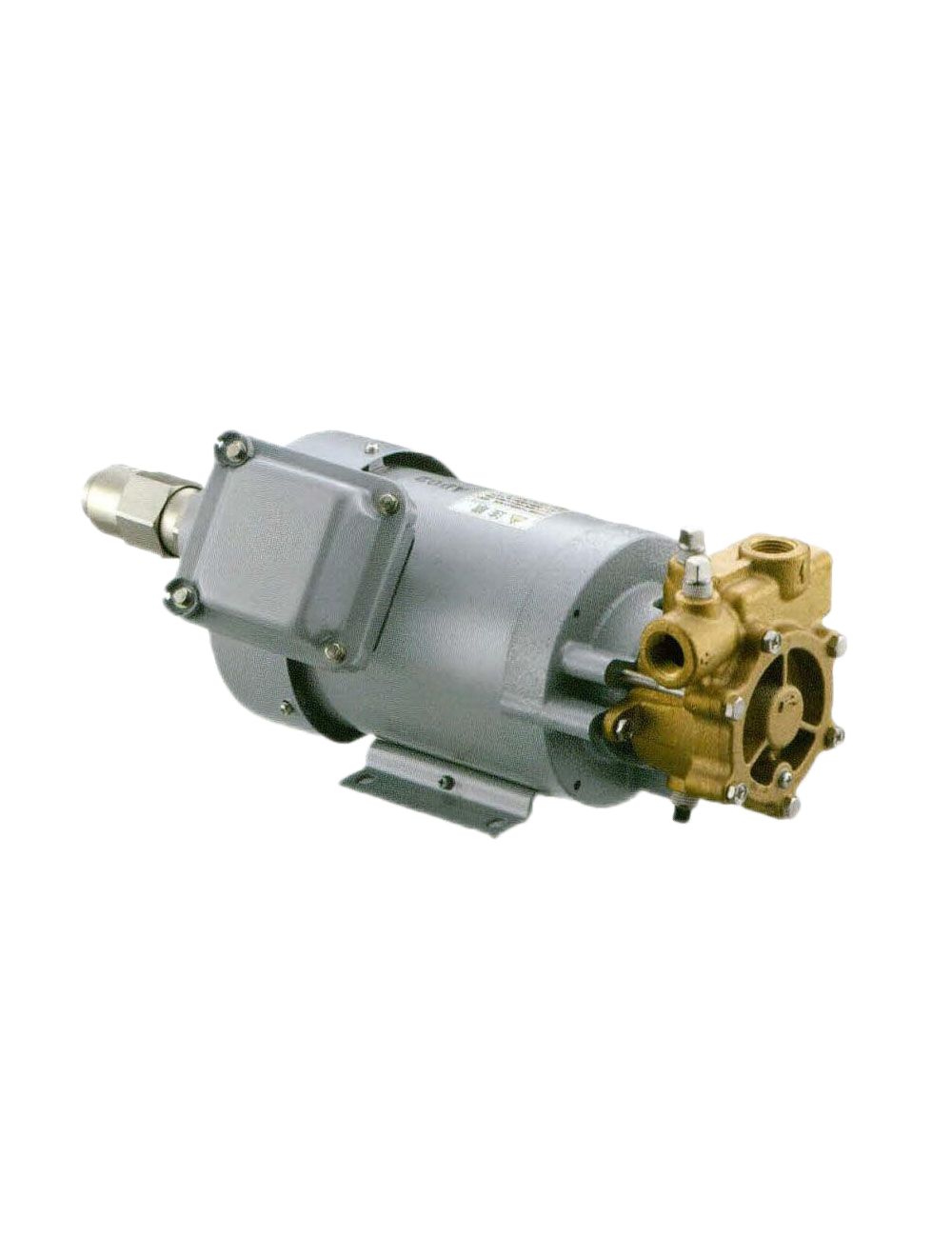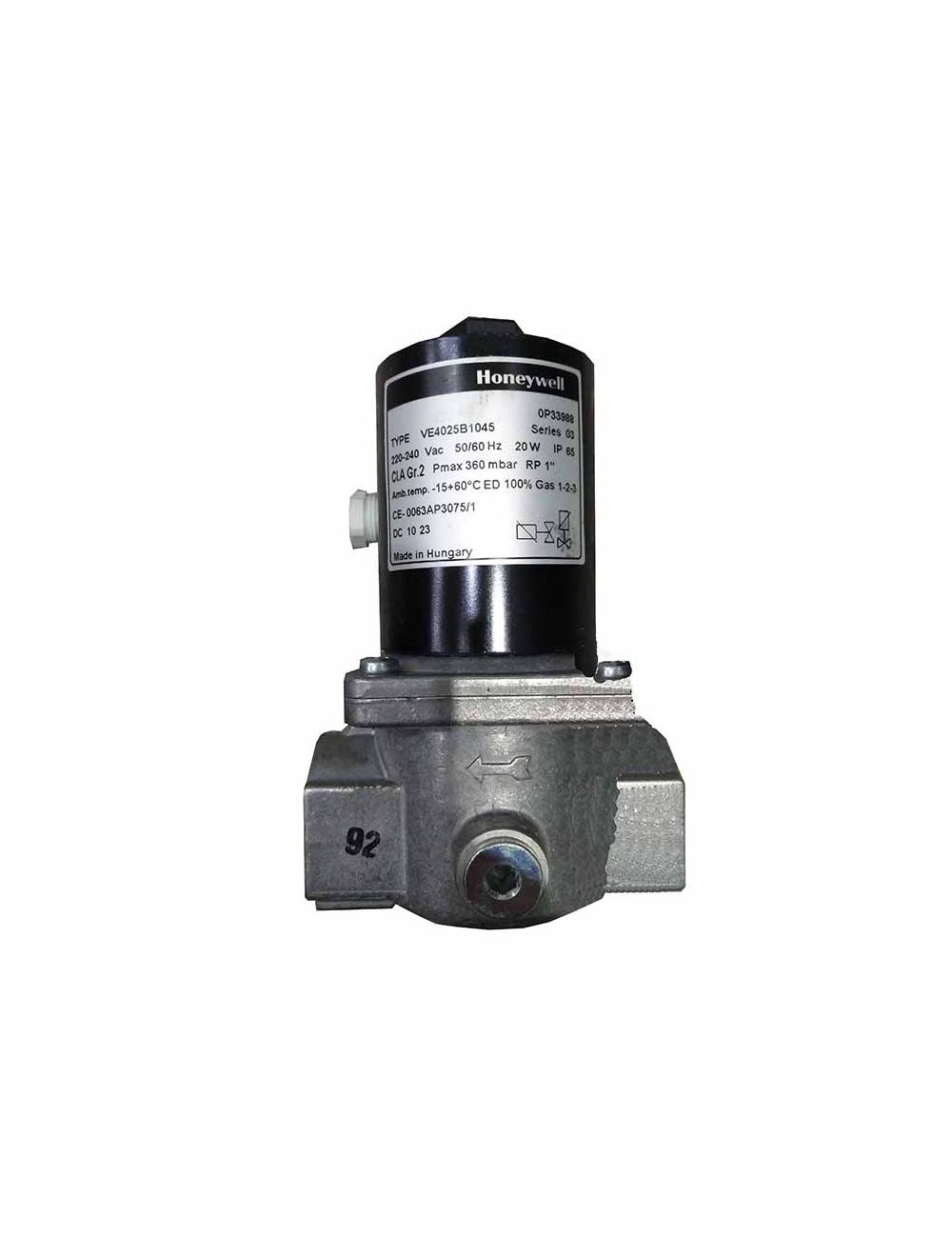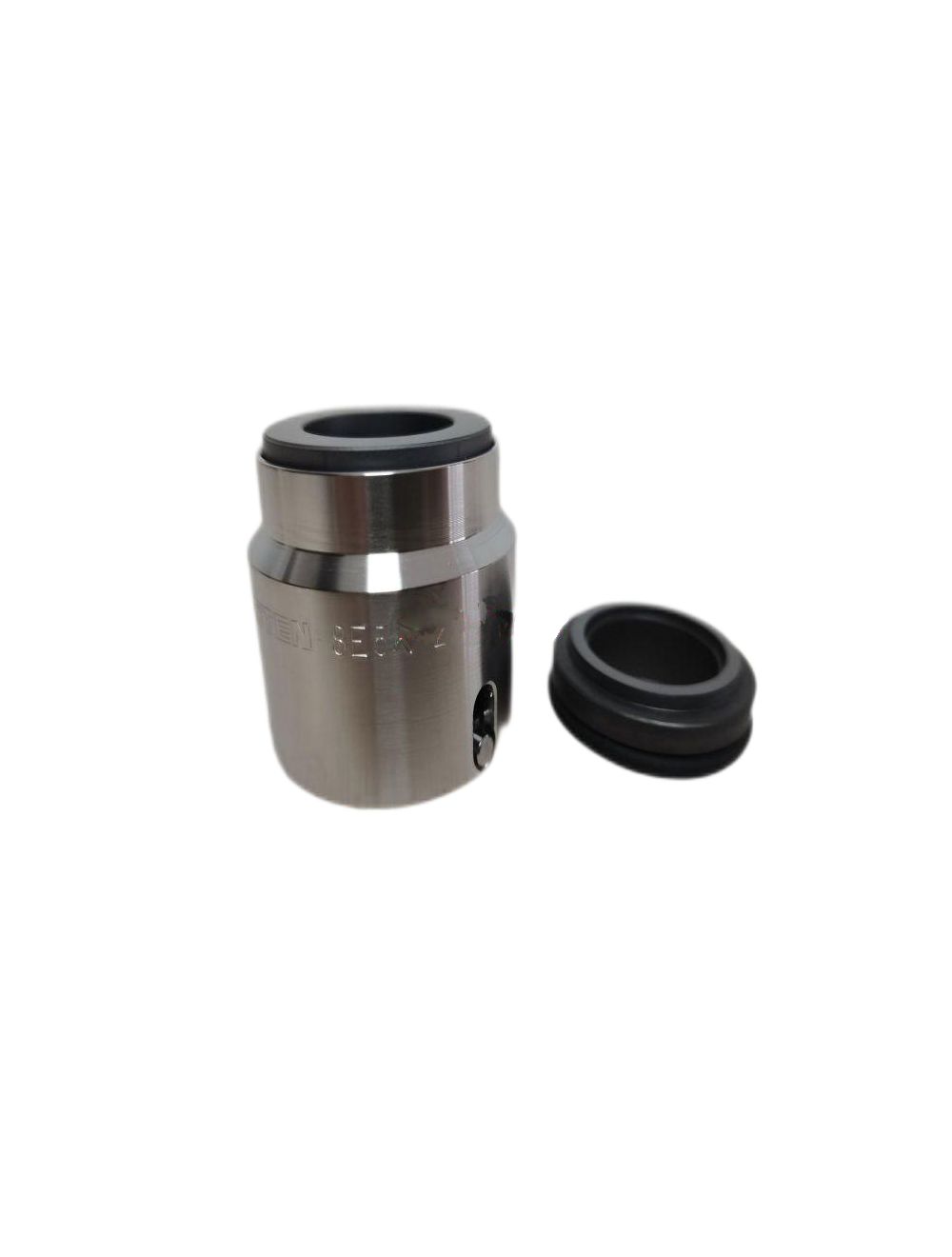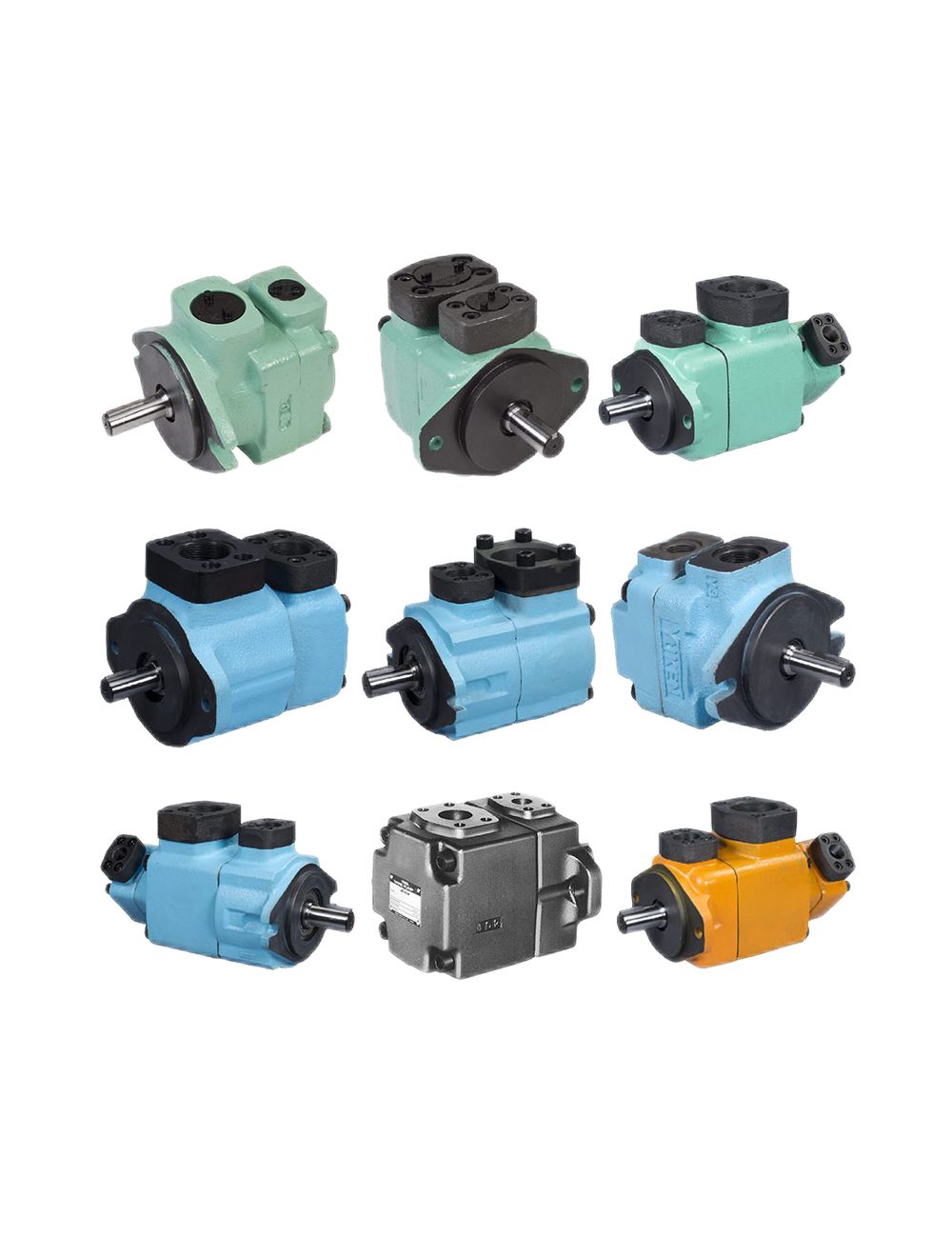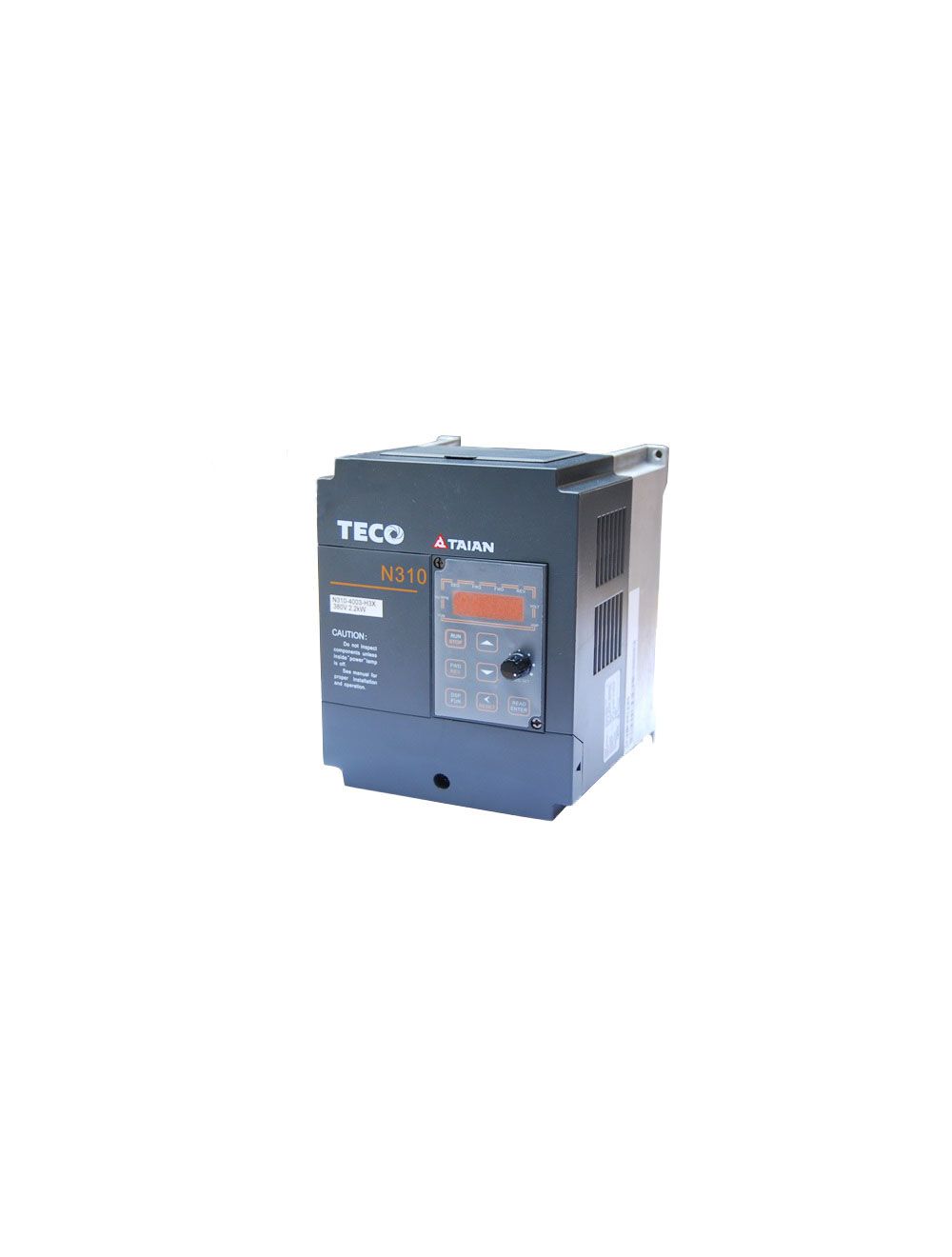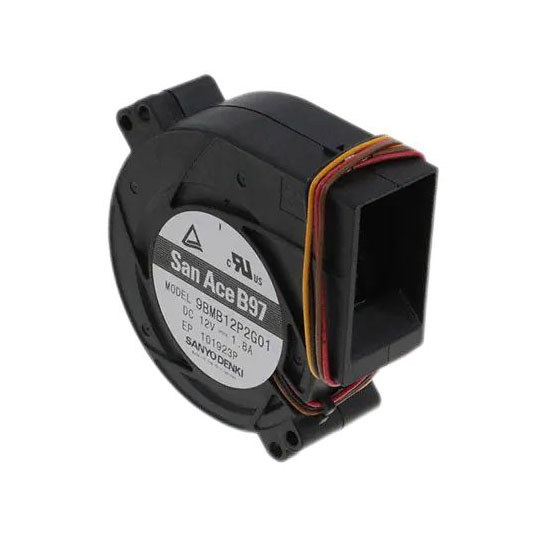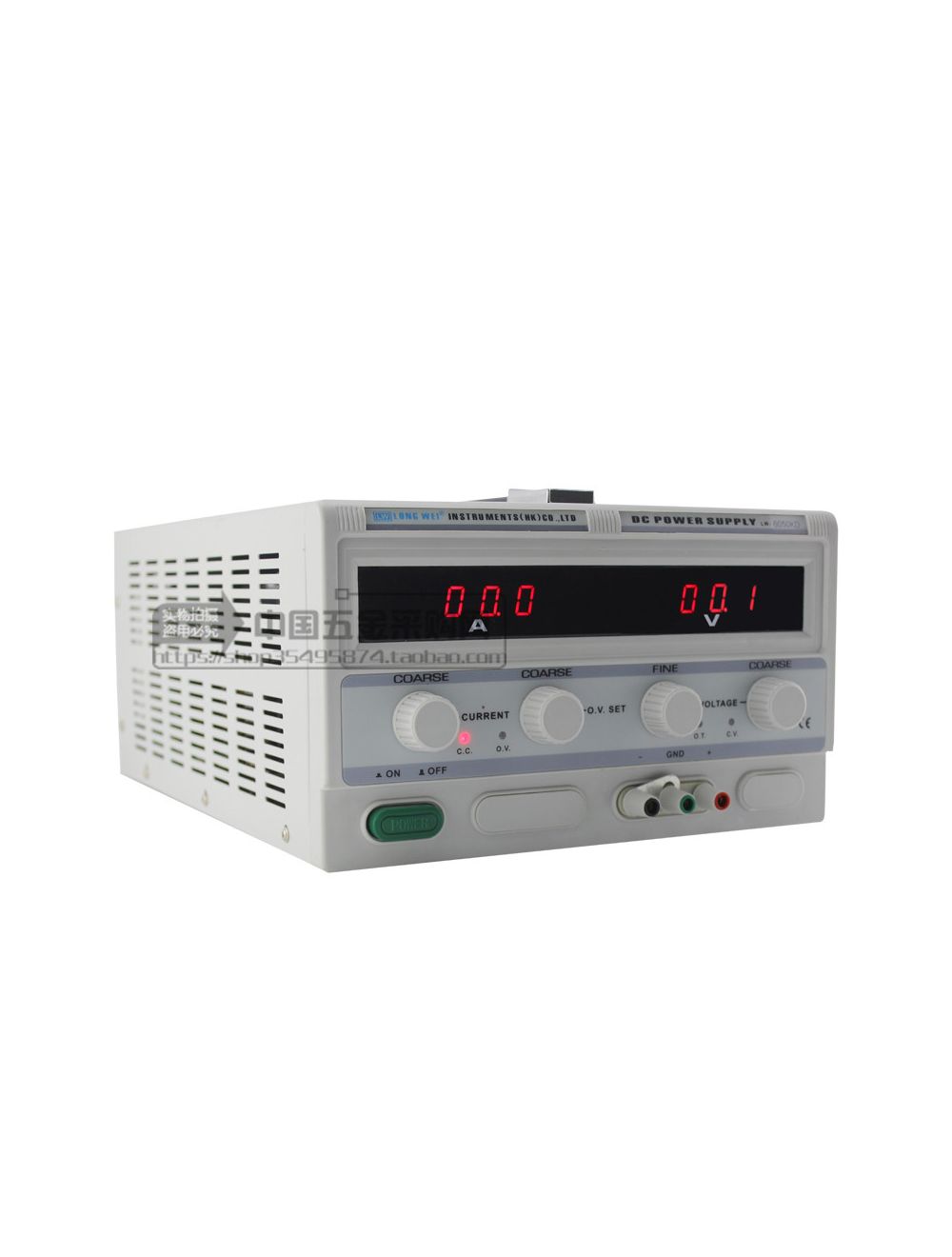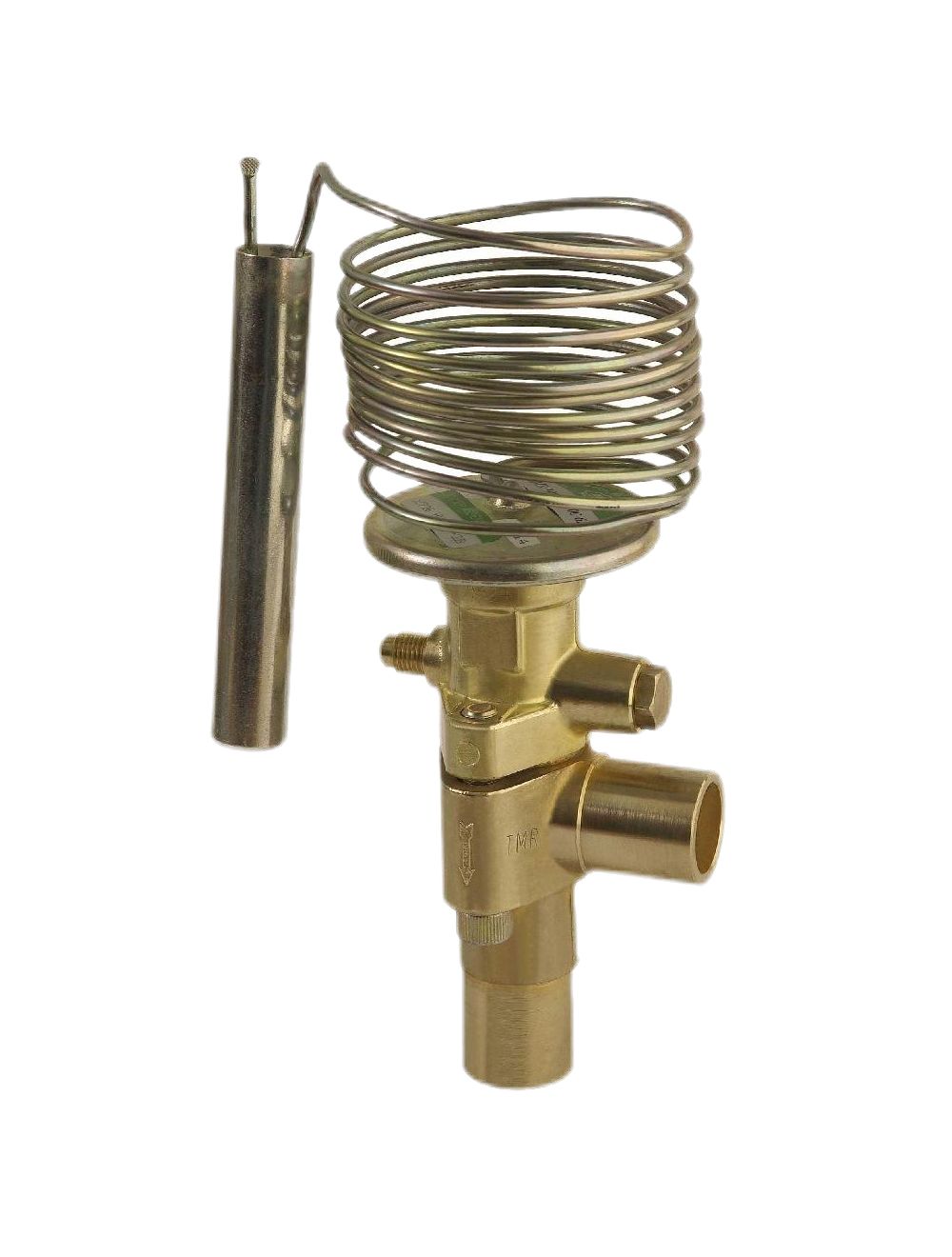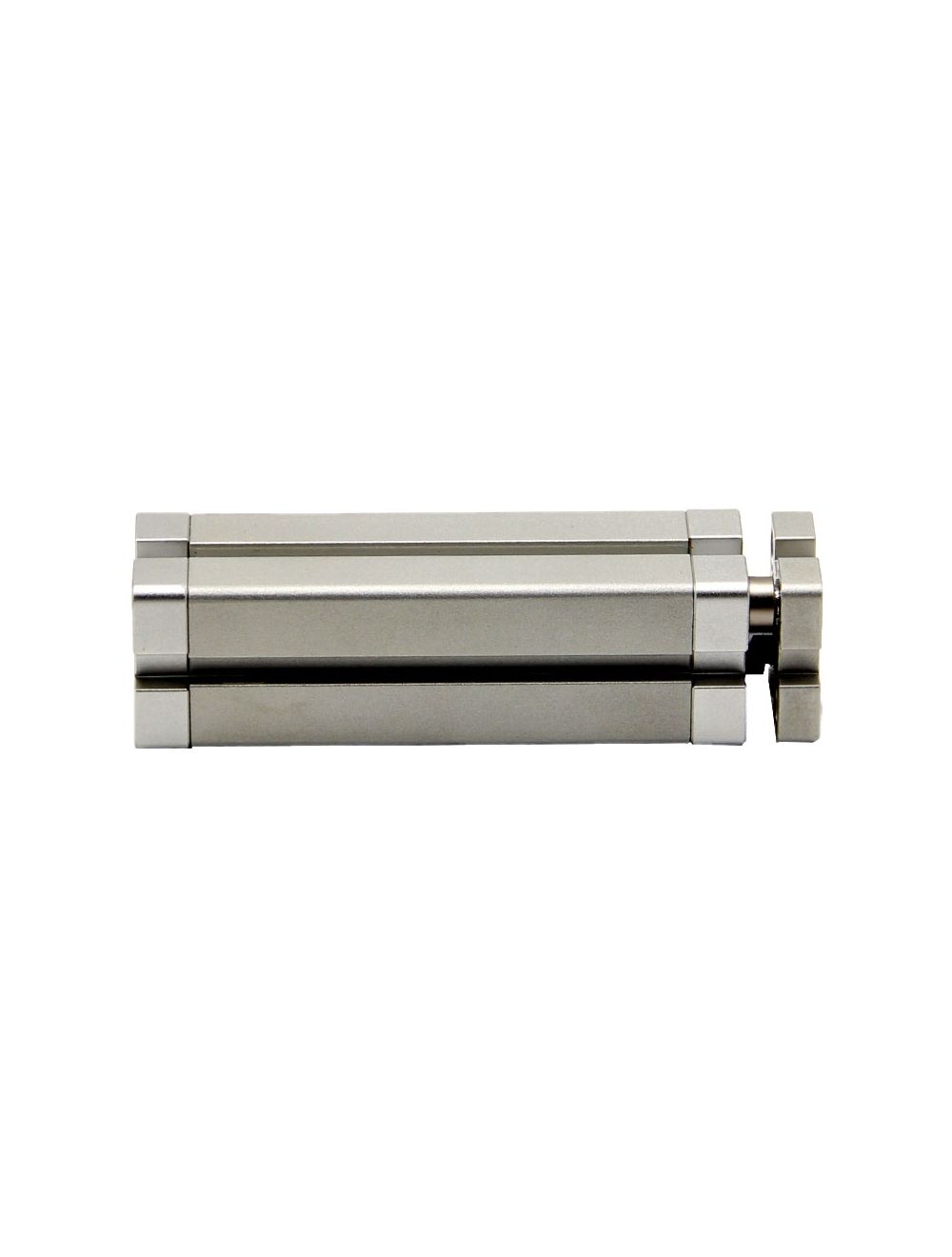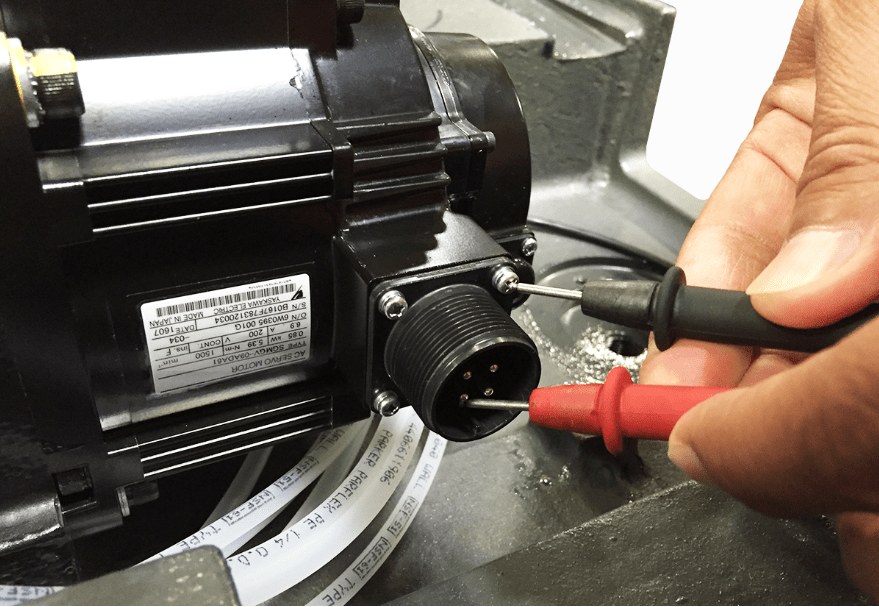
Figure 1: Check a servo motor.
The AC servo system includes: servo drive, servo motor and a feedback sensor (generally the servo motor comes with its own photoelectric encoder). All these components operate in a controlled closed-loop system. The servo motor transmits signals to the system at any time, and at the same time uses the signals given by the system to correct its own operation.
AC servo motors are used in closed environments and are usually not easily damaged. But if the AC servo motor has vibration failure, what is the reason?
1. Vibration Fault Analysis of AC Servo Motor
The following analysis of AC servo motor vibration faults is mainly focusing on the mechanical and electrical aspects.
1.1 Mechanical Aspects
(1) Bearing Wear
The clearance between the bearings at both ends of the motor and the lead screw bearing seat is too large after wear, or the bearing rolling elements and cage are severely worn due to lack of grease, causing the load to be overweight.
Excessive clearance after bearing wear will cause coaxiality errors between the motor rotor center and the lead screw center, causing the mechanical system to vibrate.
Serious wear between the bearing rolling elements and cage will cause increased friction and lead to "locked rotor". The "locked rotor" will not cause "overload alarm", but due to excessive load, it will increase the response time of the servo system and cause vibration.

Figure 2: Servo motor bearings.
(2) Unbalanced Motor Rotor
If the dynamic balance of the motor rotor is defective during manufacturing or deteriorates after use, a vibration source will be generated.
(3) Bent Shaft
The bending of the rotating shaft is similar to the imbalance of the rotor. In addition to generating vibration sources, it also produces coaxiality errors between the center of the motor rotor and the center of the lead screw, causing vibration in the mechanical transmission system.
(4) Coupling Manufacturing Defects or Wear after Use
Coupling manufacturing defects or wear after use will cause coaxiality errors between the two parts of the coupling. Especially when using rigid couplings, due to their poor manufacturing accuracy, coaxiality errors are more likely to occur and cause vibration.

Figure 3: Servo motor couplings.
(5) Poor Guide Rail Parallelism
Poor parallelism of the guide rail during manufacturing will cause the servo system to be unable to reach the designated position or unable to stay at the designated position. At this time, the servo motor will constantly wander between trying to find the position and system feedback, causing the motor to continuously vibrate.
(6) Parallelism Error between the Lead Screw and the Guide Rail Plane
During the installation process, the parallelism error between the lead screw and the plane of the guide rail will also cause the motor to vibrate due to uneven load.
(7) Lead Screw Bending
After the lead screw is bent, in addition to the axial thrust, the lead screw will also be subject to the changing radial forces. When the bending degree is large, the radial force is large, and when the bending degree is small, the radial force is small. Similarly, this radial force that should not exist will also cause vibration in the mechanical transmission system.

Figure 4: Ball screw and servo motor.
1.2 Electrical Aspects
The electrical cause of AC servo motor vibration is mainly the parameter adjustment of the servo drive.
(1) Excessive Load Inertia Parameters
The setting of load inertia is generally related to the size of the load. Excessive load inertia parameters will cause vibration in the system. General AC servo motors can automatically measure the load inertia of the system.
(2) Relatively Large Speed Proportional Gain Setting Value
The larger the speed proportional gain setting value, the higher the gain and the greater the system stiffness. The parameter value is determined according to the specific servo drive model and load conditions. Generally, the larger the load inertia, the larger the setting value. When the system does not produce vibration, the setting value should be as large as possible, but the greater the gain, the smaller the deviation, and the easier it is to produce vibration.
(3) Speed Integral Constant
Generally, the larger the load inertia, the larger the speed integral constant setting value. When the system does not produce vibration, the setting value should be as small as possible. However, reducing the integral gain will make the machine tool respond slowly and worsen the rigidity.
(4) Too Large Position Proportional Gain Value
The larger the position proportional gain setting value, the higher the gain, the greater the stiffness, and the smaller the position lag under the same frequency command pulse condition. If the value is too large, it may cause motor vibration.
(5) Acceleration Feedback Gain
When the motor is not rotating, a small deviation will be amplified by the proportional gain of the speed loop. The speed feedback generates corresponding torque, causing the motor to shake back and forth.

Figure 5: Siemens servo drive.
2. Solve AC Servo Motor Vibration Faults Based on On-Site Judgment
After learning the information above, we know what aspects can cause vibration faults in AC servo motors, but how to further narrow the scope of the fault and then locate the cause of the fault in actual maintenance is difficult. It requires comprehensive judgment based on specific on-site information.
(1) The servo motor vibration fault occurs after the new equipment is started and debugged.
The faults that occur during this period are the most complex. They may be due to mechanical manufacturing reasons or incorrect parameter adjustment, which need troubleshooting step by step. The principle of troubleshooting is to exclude simple causes first and then complex ones.
If the CNC system is equipped with two or more identical drives and AC servo motors, and one of the motors vibrates, the simplest "exchange method" can be used to swap the servo drives of the two AC servo motors. This method can quickly determine whether the problem lies in the servo drive parameter settings.
(2) The servo motor vibration fault occurs after the equipment has been running for a long time.
This situation can basically rule out servo drive parameter setting problems, because if the parameter settings are improper, the problem should have been found long ago.
(3) The servo motor vibration fault occurs just after the motor starts up.
If the AC servo motor vibrates just after it is turned on, it can be determined that mechanical jamming occurs when the CNC system automatically finds the machine zero, causing the motor to fail to reach the specified position or to repeat after reaching the specified position. In this case, it is generally a mechanical failure.
(4) The servo motor vibration fault occurs when the machine tool is processing the workpiece.
In such a situation, first consider the vibration caused by the increase in load during processing.
(5) The servo motor vibration failure occurs continuously and regularly or intermittently and irregularly.
When the fault occurs continuously, it means that the cause of the fault causing the motor vibration has always existed, and when it occurs intermittently and irregularly, it means that the cause of the fault causing the motor vibration sometimes changes. In this case, if the load does not change significantly, it can basically be ruled out as a problem with the servo drive parameter settings.

Figure 6: Servo motors used in injection molding machines.
Vibration faults of AC servo motors are caused by many complex reasons. When troubleshooting such faults, it is necessary to master the working principle of the AC servo system, understand what reasons are likely to cause motor vibration faults, and then make comprehensive judgments based on the on-site conditions to completely solve the AC servo motor vibration.

